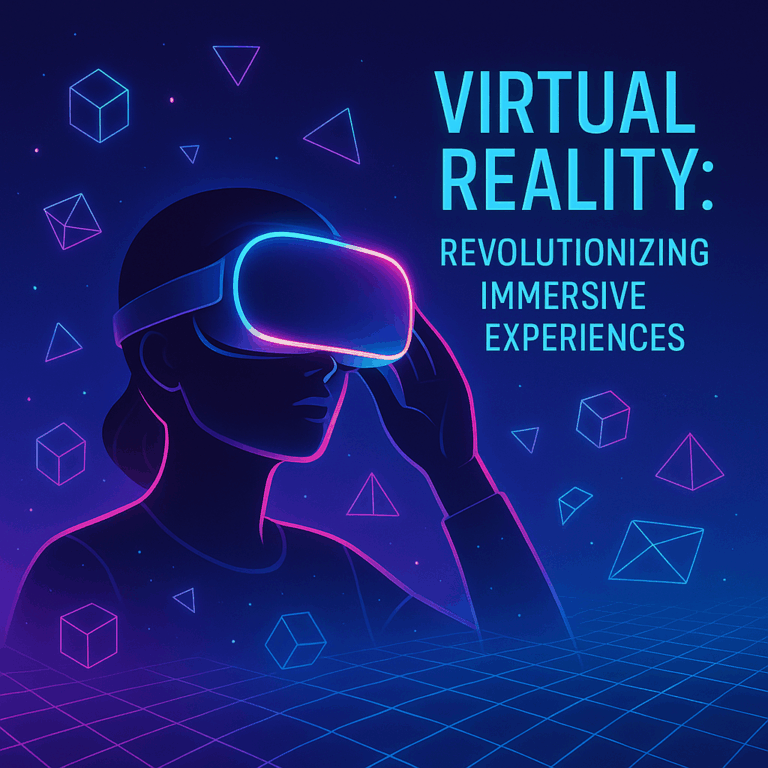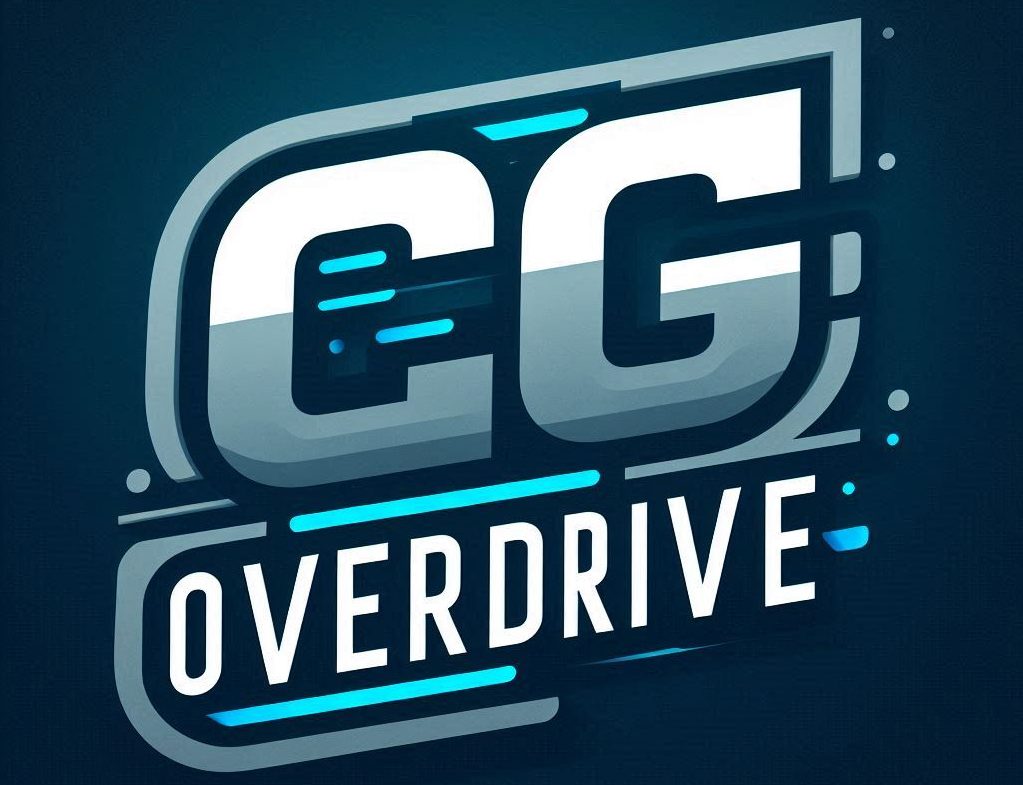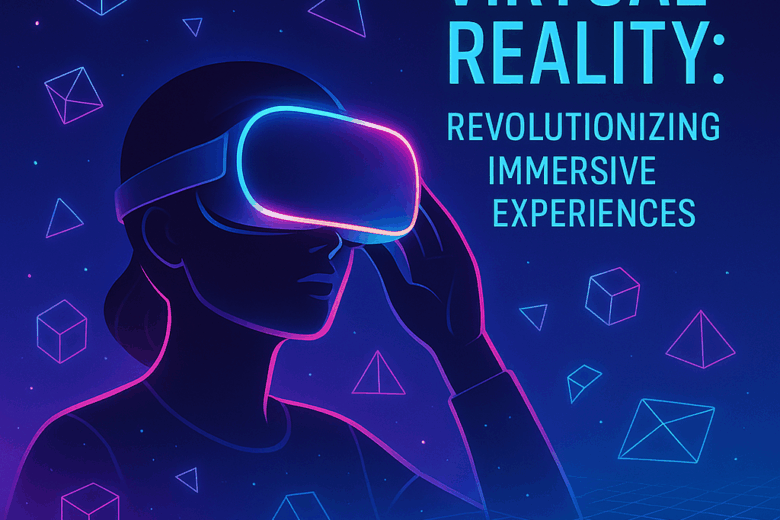Virtual Reality: The Next Frontier in Computer Graphics
Virtual Reality (VR) represents one of the most transformative frontiers in the computer graphics industry. As a technology that immerses users in synthetic environments, VR hinges on breakthroughs in real-time 3D rendering, spatial audio, and user interaction—making it a fertile ground for innovation in gaming, training simulations, and storytelling. Beyond mere entertainment, VR holds the promise of revolutionizing how we experience digital worlds, blending the technical with the creative in unprecedented ways.
Why Virtual Reality Matters in Computer Graphics
At its core, VR transforms the principles of computer graphics from static or screen-bound experiences to fully immersive, interactive environments. Unlike traditional media, VR demands ultra-responsive rendering pipelines to maintain presence and prevent motion sickness. The industry must balance visual fidelity, frame rates, and low latency—a trifecta that pushes computer graphics technology to its limits.
The significance of VR in CG stems from several factors:
– **Immersion:** VR replaces the traditional screen with a 360-degree environment, enabling a sense of presence impossible in conventional displays.
– **Interactivity:** Real-time graphical adjustments happen fluidly in response to user movements and inputs.
– **Cross-disciplinary innovation:** VR combines graphics with physics simulation, AI-driven characters, and haptics to craft believable worlds.
The escalating demand for VR content is propelling new tools, rendering techniques, and hardware architectures, making mastery of VR essential for any forward-thinking CG professional.
Key Technical Pillars Driving VR Development

Mastering VR demands a detailed understanding of its critical technical components. Below is a breakdown of the fundamental pillars powering compelling VR experiences:
| Technical Aspect | Description | Impact on VR Experience |
|————————-|————————————————–|————————————————-|
| High Refresh Rates | Maintaining 90+ FPS to prevent motion sickness | Smooth visuals increase user comfort and realism|
| Low Latency Rendering | Minimal delay between input and display update | Crucial for interaction and immersion |
| Stereoscopic 3D Rendering| Rendering separate views for each eye | Creates depth perception for 3D environments |
| Spatial Audio | Directional sound that matches user orientation | Enhances immersion through realistic soundscapes|
| Efficient Geometry LOD | Level of Detail management to optimize performance| Balances visual fidelity and frame rates |
| Physics and Collision | Realistic object dynamics and interactions | Increases believability of virtual environments |
Understanding and optimizing each pillar is non-negotiable for developers aiming to push VR’s visual boundaries while maintaining performance and comfort.
Practical Advice for CG Artists and Developers in VR
Achieving VR’s full potential requires not just technical skills but a strategic approach to creation. Here’s how CG professionals can elevate their VR projects effectively:
– **Prioritize performance optimization early:** Frame-rate drops or latency spikes compromise the user experience. Use profiling tools to identify bottlenecks in rendering pipelines.
– **Focus on scene complexity management:** Optimize models with Level of Detail (LOD) techniques and cull unseen geometry dynamically to maintain performance.
– **Leverage physically-based rendering (PBR):** Accurate material representations enhance realism without excessive computational cost.
– **Design intuitive user interfaces:** VR demands spatial UIs that feel natural and minimize motion sickness; traditional UI paradigms rarely translate directly.
– **Implement spatial audio thoughtfully:** Integrate 3D sound engines to complement the visual environment and anchor user presence.
– **Test extensively on target hardware:** VR runs on varied platforms—from tethered headsets to standalone devices—each with unique constraints; performance tuning must be hardware-specific.
These focused strategies help creators deliver smooth, engaging, and believable VR content that resonates with audiences.
Emerging Visual Effects Techniques Integrating with VR
The fusion of VR with advanced visual effects (VFX) opens new storytelling vistas. Incorporating VFX within VR environments enhances narrative depth and user engagement. Here are some trending methods:
– **Volumetric Rendering:** Captures and displays 3D volumes such as smoke and fire realistically, enriching the sense of space.
– **Ray Tracing:** Real-time ray tracing is becoming increasingly feasible in VR, enabling authentic reflections and global illumination.
– **Particle Systems:** Dynamically simulate natural phenomena like dust, rain, or magic effects that respond to user movement.
– **Depth of Field & Motion Blur:** Adds cinematic feel but requires balance to avoid disorientation in VR.
– **Dynamic Environmental Lighting:** Time-of-day cycles and weather effects bring environments to life.
Adopting these VFX techniques in VR demands technical finesse to maintain frame rates and avoid breaking immersion.
VR in Gaming: Redefining Player Engagement Through CG
Gaming is the spearhead industry driving VR adoption, where computer graphics techniques are leveraged to craft responsive, immersive gameplay worlds. Top-tier VR games demonstrate several CG innovations:
– **Real-time environmental destruction:** Physics-based destruction models increase dynamism.
– **Procedural generation:** Algorithmic content generation enhances replayability while managing development resources.
– **Avatar realism:** Detailed character modeling and facial animation increase player empathy.
– **Multisensory feedback:** Integration of haptic devices and spatial audio deepen sensory immersion.
Game developers must weave technical CG mastery with creative narrative design to harness VR’s immersive power fully.
Framework for Successful VR Project Development
Navigating the complexities of VR project development is simplified by adopting a structured framework as follows:
| Stage | Focus Areas | Best Practices |
|———————-|———————————————————|————————————————|
| Concept & Design | Define narrative goals, interaction models, and assets | Early prototyping, user experience research |
| Asset Creation | Model, texture, animate 3D assets with optimization in mind | Use modular assets, avoid over-detailing |
| Rendering Pipeline | Implement efficient rendering, LODs, and shader effects | Profile constantly, leverage GPU features |
| Interaction Design | Develop intuitive control schemes and feedback systems | Keep motion sickness low, test frequently |
| Testing & Iteration | Hardware compatibility, performance, and UX testing | Include diverse user feedback loops |
| Deployment & Support | Optimize builds, provide regular updates | Monitor performance, adapt to new SDKs |
This roadmap balances artistic vision with engineering rigor—critical for VR success.
Inspiring Future Directions in VR and Computer Graphics
The trajectory of VR in computer graphics is accelerating rapidly, driven by advances in AI, hardware, and creative tools. Some visionary trends include:
– **AI-assisted content creation:** Automating asset generation and animation to reduce production time.
– **Cloud rendering:** Offloading heavy computations to the cloud for higher-fidelity experiences on lightweight devices.
– **Mixed Reality blending:** Seamlessly combining physical and virtual environments for hybrid experiences.
– **Haptic advancements:** Enhanced tactile feedback devices expanding sensory immersion beyond visuals and sound.
– **Social VR:** Platform convergence promoting rich multiplayer interactions in virtual spaces.
Embracing these technologies requires a mindset of continuous learning and experimentation. The future of VR and computer graphics promises not only more realistic visuals but richer, more human-centered storytelling.
—
Immersing oneself in VR is immersing in the future of computer graphics itself. As developers and artists push technical limits, VR’s blend of interactivity, immersion, and creative potential will redefine not just gaming or media, but the very fabric of digital storytelling. A deep technical foundation combined with innovative design is the key to unlocking these limitless virtual worlds.

